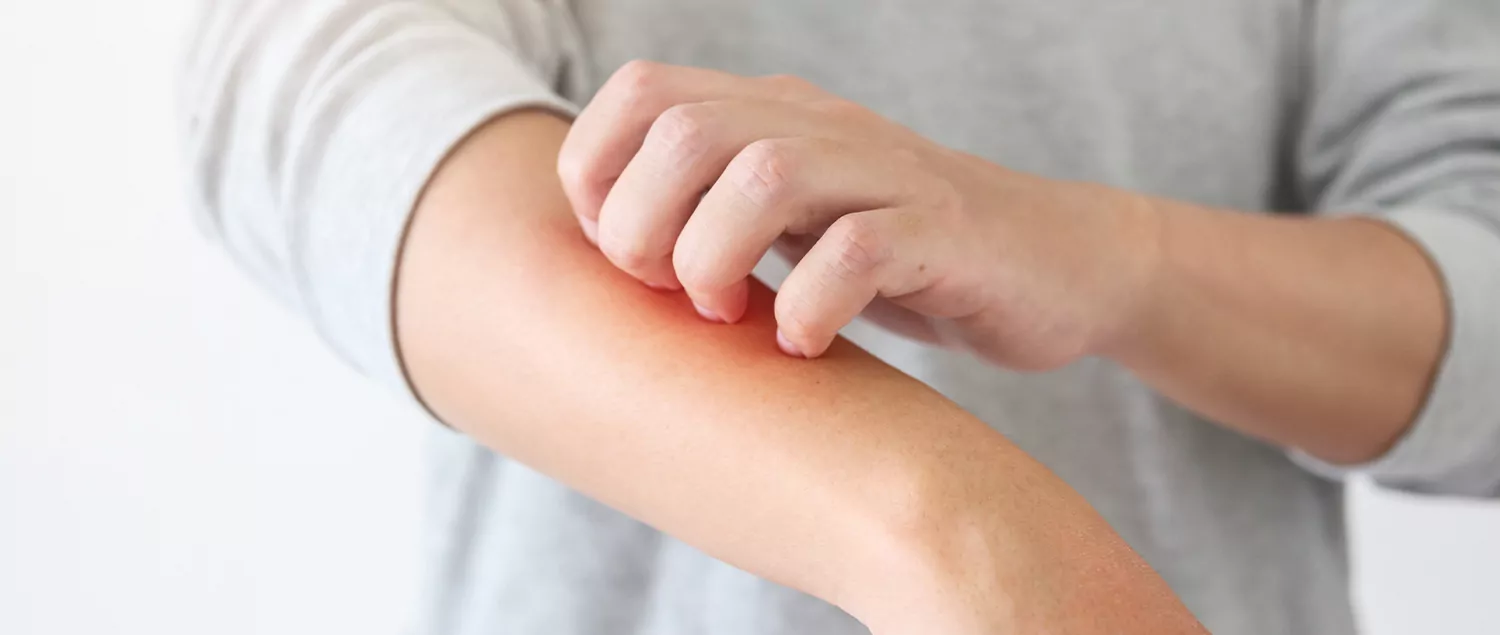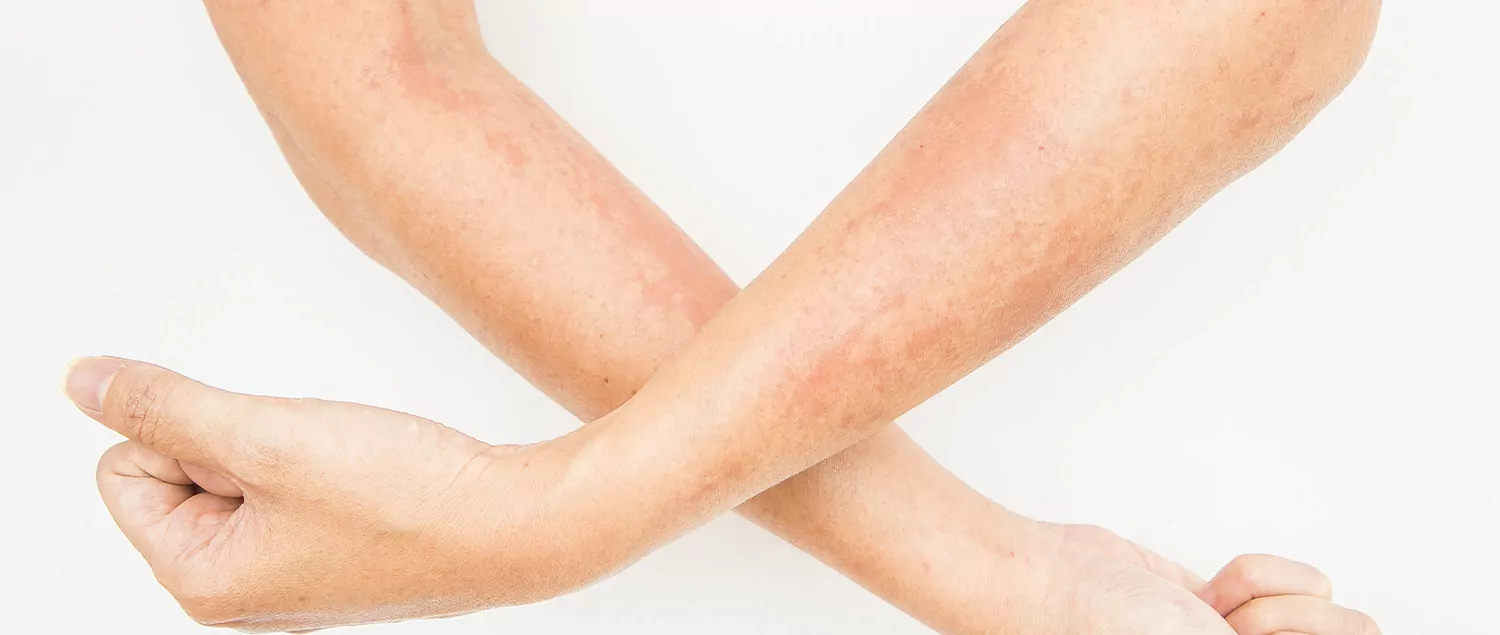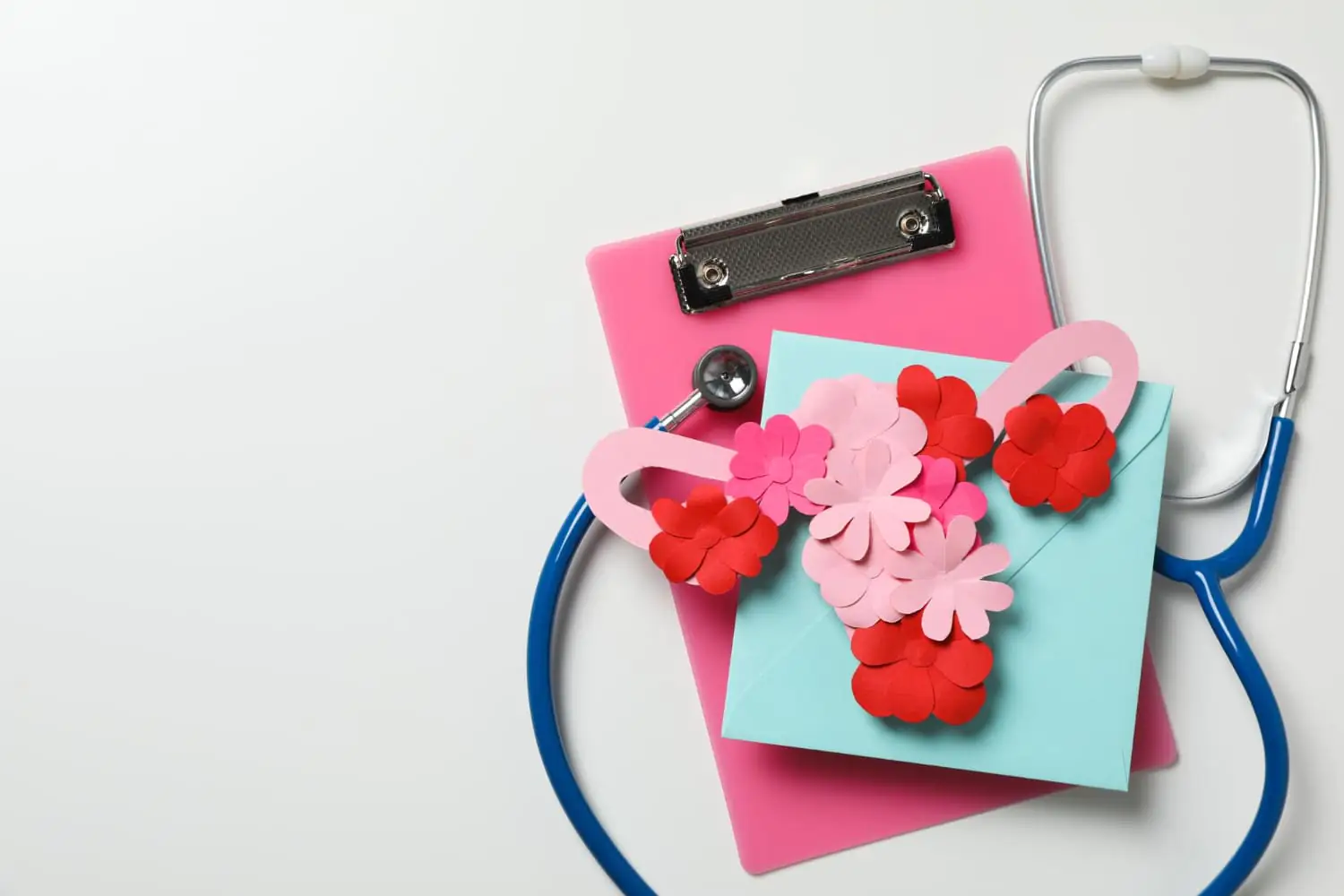What is a rash?
Rash; It is a skin rash that occurs as a result of blockage of sweat ducts when the body sweats excessively and causes excessive itching. This condition is much more common, especially on the face and in the folds of the skin. Rash is also called heat rash, sweat gland inflammation and miliaria. It can occur frequently on the neck, under the breast, armpits, face, inner thighs, groin, arms and legs. Because sweat can accumulate in such curved areas and irritate the skin. Rash is more common in hot and humid climates, hospitalized patients, patients with obesity, people over the age of 65 and newborns. However, it is a condition that can affect every individual.

What are the Types of Rash?
The types of rash are classified according to the level of effect of sweat on the skin and the appearance of the rash on the skin surface. Depending on the degree to which sweat affects the skin, different forms and symptoms of rash can occur. There are four types of rash:
- Miliaria crystallina: The mildest and most common type of rash. It occurs as a result of clogging of sweat pores on the skin surface. This form is characterized by small, clear, fluid-filled swellings that can easily burst. The type that does not cause itching or pain. It can occur frequently in adults and infants. It is usually seen spread over the face, neck and upper body.
- Miliaria rubra: It occurs deeper in the skin and is the more painful type of rash. This type of rash is characterized by inflamed and small blister-like bumps, itching and tingling sensations in the affected area. In children, rash is common in the armpits, folded areas of the trunk and groin, and on the neck. In adults, it can affect the scalp and friction areas of clothing.
- Miliaria pustulosa This type of rash is rarely caused by the swelling of the miliaria rubra filling with pus (inflammatory fluid). It can also be defined as an inflamed rash.
- Miliaria profunda: A rare form of rash. It affects the dermis layer, the deepest layer of the skin. Miliaria profunda appears as hard, painful, itchy and inflamed bumps. It is usually observed in the trunk and extremities. This form can recur and last for a long time. This may require medical intervention.
What are the Symptoms of Rash?
The symptoms of a rash can vary depending on how much sweat affects the skin. Some symptoms are mild enough to improve with self-care in a short time. Some symptoms may be due to severe skin irritation that requires medical attention and may require medical attention. Some of the symptoms of rash are as follows:
- Small red spots
- Swelling in the area of the blister
- Severe pain
- Tingling sensation
- Disturbing itching
- Mild pain
- Burning sensation in the affected area
- Fire
- Nausea
What Causes Rash?
It occurs due to the blockage of the ducts that carry sweat to the skin surface and the sweat remains deep in the skin. Sometimes sweat seeps into the upper layer of the skin and acts there. In both cases, the body reacts to sweat remaining in the skin. Inflammatory reactions occur in the area where sweat accumulates. In rashes, the trapping of sweat in the skin can be caused by small pieces of dead cells or hair follicles blocking the sweat glands. At the same time, the rash can become even more severe in hot weather. The factors that cause rash in children and adults differ.
What Causes Diaper Rash in Babies?
Especially newborns are at risk for diaper rash. Because newborns’ underdeveloped sweat glands can trigger diaper rash. In older babies, not changing their clothes after sweating can cause diaper rash. In addition, dressing babies in layers of clothes prevents air contact to the skin and may increase sweating, leading to diaper rash. Hot and humid weather can make the rash worse. Rash in children can occur due to external factors or physiological reactions. Especially allergic rash can occur in children due to food allergies, insect bites and viral infections. As a result of these factors, the rash may take the form of an allergic rash.
What Causes Rash in Adults?
The answers to the question of why adults get diaper rash are similar to the causes of diaper rash in infants. In general, hot weather and sweating are the main causes. Apart from these, the causes of rash in adults include the following.
- Going through periods of hormonal changes such as menstruation
- High fever
- Wearing excessively tight or poorly breathable clothes that increase sweating
- Excessive physical activity in hot weather, not changing sweaty clothes immediately after activity
- Preferring fabrics that do not dry quickly in clothes
- 65 and over
- Being obese or overweight
- Increased time spent in bed and lack of adequate bed ventilation in patients on bed rest
- Using medicines that reduce sweating
How does the rash go away?
There is no specific treatment for rash. In response to the question of what is good for rashes, it can be said that the main goal for the healing of rashes is to cool the skin and keep it dry. In addition, factors that cause skin irritation and itching should be eliminated. In general, diaper rash can be treated with different applications in infants and adults. If fever, fatigue and rash persist despite trying these treatments, a specialist doctor should be consulted.

How Does Rash Pass in Babies?
Diaper rash in infants and children should be diagnosed by a dermatologist. For this reason, it is recommended that a mother who says that her baby has a rash on her face should first consult a dermatologist. However, there are simple applications that can be done at home in line with the physician’s recommendations. Here are some practices that can prevent diaper rash from worsening in the baby:
- The baby should be kept away from the heat. The house should be cooled with air conditioning or a fan.
- The baby’s skin should be kept as cool and dry as possible.
- Babies should not be covered too thickly in hot weather as heat rash may develop.
- The baby’s clothes should not be thick and tight. Lighter clothes that facilitate air passage to the skin should be preferred. Cotton clothes may be preferred.
- The baby should be dressed according to the ambient temperature.
- Bathing with warm water without soap is allowed. Instead of scented and harsh soaps, soaps that are softer and compatible with baby skin can be preferred.
- The baby’s sweaty clothes and wet diapers should be changed regularly.
- If the diaper area is affected, the diaper may not be used for a few hours.
- Avoid the use of products such as baby powders, creams and lotions that can cause blockage of the pores and worsen the rash.
How Does Rash Go Away in Adults?
After the diagnosis of a rash, the doctor should be informed about rash care at home. Under the guidance of a doctor, the following can be done to prevent diarrhea from getting worse in adults:
- When the body is hot and humid, the skin can be cooled with air conditioning or a fan.
- To dry and moisturize the body, take a cool shower and pat dry with a towel. It should be noted that applying a towel harshly to the skin can increase irritation and the severity of rashes.
- Cotton clothing that allows air to flow to the skin should be worn.
- Clothes made of wool and itchy fabrics are more irritating to the skin and should be avoided.
- Loose clothing should be preferred over tight clothing that may cause excessive friction on the skin.
- In case of excessive itching and pain due to rash, lotions or creams prescribed by the doctor should be used regularly.
- Activities that cause excessive sweating in hot weather should be avoided.
- Outdoor activities should be done during cooler times of the day.
- Cosmetic products, creams and ointments that clog skin pores should be avoided.
- Drink plenty of water to cool and hydrate the body.
- Rashes on the body should not be covered with plasters or bandages, but should be allowed to breathe.
How Does Heat Rash Go Away?
Heat-induced rash can heal in a short time if the body is kept cold and dry. Taking a cold shower and keeping the body dry, especially after heat exposure, can alleviate symptoms. Products such as oils and lotions that can clog pores should not be used after showering. Loose and cotton clothes that facilitate skin contact with air should be worn. It is also important that the environment after a shower is cool. This prevents the body from reheating and sweating.
Is Rash Temporary?
If the rash is mild, the problem is expected to improve within two to three days on average, provided the necessary precautions and measures are taken. Severe rashes can last for about a few weeks if left untreated. A doctor should be consulted if the rash worsens or does not improve for a very long time despite taking the right precautions.
Does a rash itch?
The rash is usually itchy and mild irritation of the skin may occur due to this itching. Therefore, the affected area should not be itched as much as possible. Some types of rash can worsen with scratching or rubbing. Scratching the affected area can cause the swelling to burst. Therefore, if there is excessive itching, a doctor can be consulted for the use of a cream to alleviate this problem.
Is there a type of rash that does not go away?
The rash can heal within a few days if the skin is kept cold and dry. However, some forms of rash can be long-lasting and recurrent. In some cases, other skin problems can be mistaken for a rash. Therefore, skin lesions that persist for more than a few days and rashes that do not go away should be referred to a specialist health practitioner. This way, the underlying health problem can be identified and treated before it gets worse.




